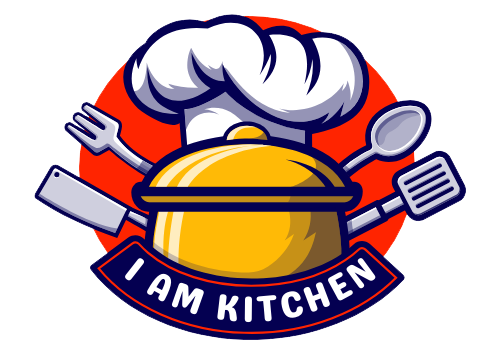Your kitchen is the heart of your home, and your kitchen counter is where all the magic happens. From meal preparation to serving, your kitchen counter sees it all. But with all the hustle and bustle that goes on in this space, it’s no wonder that kitchen counters can quickly become cluttered and disorganized. Fortunately, with a few simple tips and tricks, you can keep your kitchen counter tidy and functional, making cooking and meal preparation a breeze. In this article, we’ll take a closer look at The Ultimate Guide to a Clutter-Free Cooking Space kitchen counter organization, as well as some practical tips for keeping your kitchen counter clutter-free.
Why Should You Organize Your Kitchen Counter?
First and foremost, an organized kitchen counter makes cooking and meal preparation easier and more enjoyable. When you have a clutter-free space to work in, you can move around more freely and have easy access to all the tools and ingredients you need. This can save you time and reduce the stress of meal preparation.
In addition to making cooking easier, an organized kitchen counter also makes your kitchen look cleaner and more inviting. When your kitchen counter is cluttered with appliances, utensils, and other items, it can make your entire kitchen look messy and disorganized. On the other hand, when your kitchen counter is clean and tidy, it creates a more inviting space for family and friends to gather.
When Should You Organize Your Kitchen Counter?
The best time to organize your kitchen counter is when you’re not using it. This might mean taking a few minutes after breakfast or dinner to clear off the counter and put things away. Or, you might choose to dedicate a specific time each week to kitchen counter organization. The most important thing is to be consistent, regardless of your strategy. By making kitchen counter organization a regular habit, you can keep your space tidy and clutter-free all the time.
What Should You Consider When Your Kitchen Counter?
Before you begin organizing your kitchen counter, it’s important to consider your needs and preferences. Think about how you use your kitchen counter and what items you use most often. This will help you determine what items you need to keep on your counter and what items can be stored elsewhere.
Here are some additional factors to consider when organizing your kitchen counter:
- Use zones: Divide your counter into zones based on the tasks you perform most often. For example, you might have a zone for meal preparation, a zone for cooking, and a zone for serving.
- Consider storage solutions: Invest in storage solutions that make it easy to store and access your kitchen tools and appliances. This might include drawer organizers, shelving, or hanging storage solutions.
- Keep it minimal: Resist the urge to clutter your kitchen counter with too many items. Instead, focus on keeping only the essentials on your counter, such as a coffee maker, a cutting board, or a bowl of fruit.
- Be mindful of aesthetics: Consider the look and feel of your kitchen counter when organizing. Choose items that complement your kitchen décor and create a cohesive look.
- Stay flexible: Remember that your kitchen counter organization needs may change over time. Be willing to adjust your system as needed to accommodate new appliances, tools, or cooking routines.
Where Should You Store Items That Aren’t on Your Kitchen Counter?
When organizing your kitchen counter, it’s important to have designated storage space for items that aren’t on the counter. This might include items such as pots and pans, small appliances, or specialty kitchen tools. Consider the following storage options:
- Cabinets and drawers: Store items in cabinets and drawers that are easily accessible and organized.
- Pantry: Use your pantry to store dry goods, canned items, and snacks.
- Wall-mounted storage: Install wall-mounted storage solutions, such as pegboards or hanging racks, to store utensils, pots, pans, or other items.
- Appliance garages: Consider installing an appliance garage on your counter or in a nearby cabinet to keep small appliances, like toasters or blenders, out of sight but easily accessible.
- Under-cabinet storage: Use the space under your cabinets to store items like cutting boards or baking sheets.
By having designated storage spaces for these items, you can keep your kitchen counter clutter-free while still having access to all the tools and appliances you need.
How Can You Maintain Your Kitchen Counter Organization?
Maintaining a clutter-free kitchen counter requires ongoing effort. Here are some tips for keeping your kitchen counter organized over time:
- Clean as you go: As you cook and prepare meals, take a few extra minutes to clean up after yourself. This can include wiping down counters, washing dishes, and putting away ingredients and tools as you go.
- Use the one-in, one-out rule: When you bring a new tool or appliance into your kitchen, consider getting rid of an old one. By doing this, clutter will be less likely to accumulate over time.
- Regularly reassess your system: Take a few minutes each month to reassess your kitchen counter organization system. Consider what’s working well and what needs to be adjusted. By regularly reassessing your system, you can keep it functioning optimally.
- Involve your family: Encourage your family members to help keep the kitchen counter organized. Assign tasks, like clearing the counter after meals or putting away utensils and appliances, to different family members.
An organized kitchen counter can make cooking and meal preparation easier, as well as create a more inviting space in your home. By considering your needs and preferences, using storage solutions, and maintaining your system over time, you can keep your kitchen counter clutter-free and functional. So, whether you’re a seasoned home cook or just getting started, take the time to organize your kitchen counter and see the difference it can make in your daily routine.




